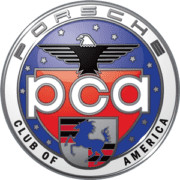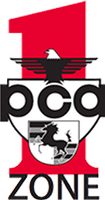What’s New
This is my last column as the Driver Education chair. The last two years have been challenging and rewarding at the same time, but I consider it a way of giving back to a club that has given me so much over the years. Before I relay my many thanks, let me tell you about a few upcoming events. First, our annual Mid-Winter Track Event is being held on Sunday, January 29 (for football fans, no worries- this is the off-week before the Super Bowl). The Mid-Winter event is not conducted at a track, but will be held at The Villa in Mountain Lakes. There are further details in this issue of the magazine, but this event is intended to inform members, who have not been to a Driver Education event, about the program. We will have presentations on various aspects of the program, on-track video, and plenty of time to ask questions of senior driving instructors. The cost is only $25. This includes a hot buffet lunch and a coupon to recoup your seminar fee at your first DE event. Second, although we have not settled on a date at this writing, Brian Till has agreed to join us for the Advanced Driver seminar. If you watch races on Speed you may have seen Brian reporting from the pits. He also is a former Indy Car driver and a longtime high performance driving instructor at the Mid-Ohio School. Watch for an announcement in next month’s magazine for the date and location!
The evening of the event we decided to leave extra early to avoid arriving late as happened at the last event due to heavy traffic on 287. Arriving at the Villa, we set up our New Member table and were ready in plenty of time to greet the New Members. Shortly the Event Chairs arrived and we were ready for the New Members. As each arrived we greeted them, gave them there information packet and introduced them to the Event Chairs. While this was going on, the staff at the Villa put out the food. At this point for some reason most of the attendees gravitated to the end of the room where the food was. Go figure! Anyway the New Members got to meet the Event Chairs, have their questioned answered and have some great food while sharing their Porsche stories.
The resistance of a car to leaning, or roll, while cornering is a primary factor in how a car behaves. There are two reasons for this: Roll affects how the tires touch the pavement and relative roll resistance determines how much weight transferred each corner of the car will carry in a corner. It is clear that a car’s body roll influences grip by tilting the tires on the pavement, but tires are also sensitive to how much vertical load is placed on them. More load equates to more grip, but the tire is also less efficient. Increasing the roll resistance of one axle of a car causes more load to be transferred at that axle, making the tires on that axle work less efficiently. It is this principle you work with by stiffening or softening the chassis. Sway bars and shocks are part of a car’s roll resistance. They are commonly adjustable and work in different ways to affect a car’s behavior.
Oktoberfest is not only celebrated in the homeland of Porsche, but also here in New Jersey at the Deutscher Club in Clark, NJ. This year NNJR was again invited to participate in their final biergarten fest of the season on September 30. The Deutscher Club, in conjunction with NNJR, sponsored a lively dinner, complete with German food, plenty of beer, and a traditional oompah band, in combination with a people’s choice concours event.
After what seemed like a summer of continuous rain, we finally lucked out and had great weather for our Oktoberfest celebration – at least before 9:00pm after which, you guessed it, it started to drizzle. This in no way, however, hampered the enjoyment of the NNJR members who turned out for this fete. Once again we had an outstanding turnout of spectacular Porsches that our members put on display for all of the Deutscher Club attendees to view and enjoy.
Jeff McFadyen took first place in the people’s choice concours with his outstanding 1957 356 outlaw. Murray and Akemi Kane took second place with their always immaculate 1994 911 coupe, and Anthony Cristello took third place with his beautiful metallic blue 1989 911 turbo.


